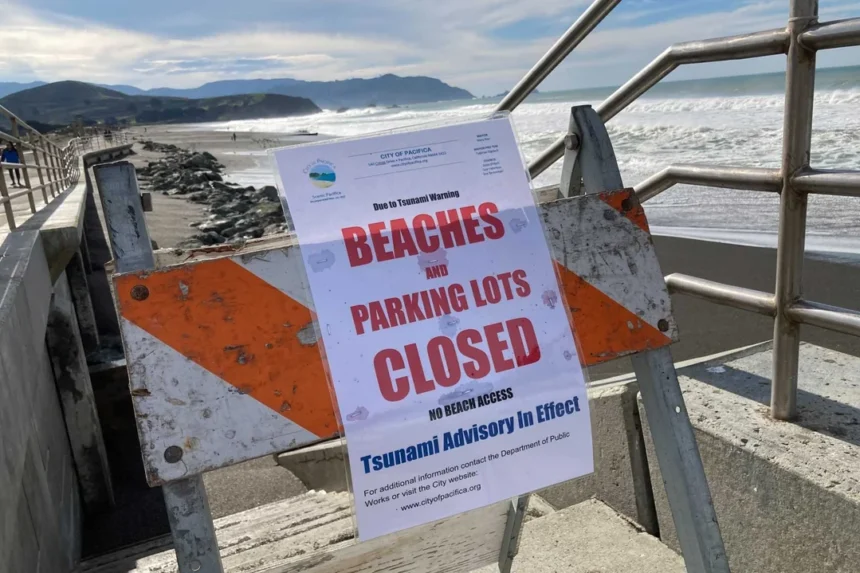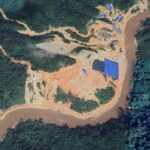The tsunami advisory for Hawaii has been cancelled after a powerful earthquake struck near Russia’s far east. Earlier, tsunami warnings for Japan and the US coastline were eased and replaced with advisories. Local authorities in each area stayed alert as the situation changed.
Emergency officials monitored the waves and shared updates to keep everyone safe.
A huge earthquake measuring 8.8 struck Russia’s Kamchatka Peninsula on Wednesday, 30 July 2025, at 11:24 a.m. local time. This quake, one of the largest ever recorded by the U.S. Geological Survey, sent tsunami waves racing across the Pacific and set off alarms across the region. Authorities in Japan, Hawaii, and along the U.S. West Coast issued warnings and ordered evacuations as a result.
Kamchatka Shaken by Destruction and Aftershocks
The main earthquake hit at a shallow depth of 12 miles, which increased its impact in the sparsely populated eastern region of Russia. Governor Vladimir Solodov called it the strongest experience in decades. The capital, Petropavlovsk-Kamchatsky, was thrown into chaos.
Cars swayed in the streets, and furniture was knocked over in homes and businesses. Some buildings, including a kindergarten, suffered damage. According to regional health minister Oleg Melnikov, a few people were hurt, but no one suffered serious injuries.
The Kremlin confirmed that there were no deaths.
More than 125 aftershocks followed, including a significant 6.9-magnitude shake. The area also saw the Klyuchevskaya Sopka volcano erupt. In Severo-Kurilsk, tsunami waves reached up to 13 feet, flooding the port, pulling fishing boats out to sea, and swamping a fish processing plant. Residents were moved to higher ground, and the power grid was turned off to check for damage.
Tsunami Waves Reach Japan, Prompting Large-Scale Evacuations
Japan felt the impact quickly. Tsunami warnings stretched from Hokkaido to Wakayama, with about two million people told to leave their homes. The meteorological agency warned waves could reach 10 feet, but early reports showed lower waves: around 1 foot on Hokkaido and up to 4.2 feet in Iwate. By the evening, most warnings were reduced, but local officials continued to urge caution since tsunamis can produce several waves over many hours.
Sadly, a 58-year-old woman died when her car went over a cliff as she tried to escape to higher ground. At the Fukushima nuclear plant, all 4,000 staff evacuated as a safety measure, but inspections found no problems. Train lines and Sendai airport shut down service for a while.
Hawaii Prepares, Then Relaxes as Risk Subsides
In Hawaii, sirens sounded and preparations ramped up, with the first waves expected at 7:17 p.m. Tuesday local time. Governor Josh Green called on residents to move away from the coast or shelter in high buildings, warning that waves could reach around 3 feet on top of normal surf. Roads became gridlocked as people tried to get to safety, and ports closed their doors.
Waves at Hilo on the Big Island reached almost 5 feet, while Oahu recorded surges just over 1 metre. Despite these conditions, the islands avoided major harm. By Wednesday morning, warnings dropped to advisories, and evacuation orders ended.
Governor Green said he was greatly relieved that the situation was less severe than initially feared. The Pacific Tsunami Warning Centre called off the advisory by the afternoon, though the Big Island saw some minor flooding.
U.S. West Coast Sees Limited Effects
Along the U.S. West Coast, officials issued tsunami advisories from California to Alaska. Northern California, from Cape Mendocino to the Oregon border, was most at risk. Crescent City experienced waves up to 3.6 feet, while San Francisco saw surges of about 0.7 metres.
No serious damage was reported, and advisories ended by the afternoon. The National Weather Service warned that strong currents could stick around, and people should keep away from beaches and rivers.
Pacific Islands and South America Maintain Caution
While the worst fears faded in the U.S. and Japan, South America and various Pacific islands stayed alert. Chile raised its tsunami alert to the highest level, moving hundreds of people to safety, including inmates from several prisons near the coast.
Ecuador’s Galapagos Islands saw waves almost 5 feet high, and surges in French Polynesia’s Marquesas Islands ranged from 1.1 to 2.5 metres. Peru closed more than half its Pacific ports as a precaution. Colombia, Costa Rica, and Panama issued alerts too, but most were cancelled as conditions improved.
Living With Uncertainty on the Pacific Ring of Fire
This massive earthquake struck along the Pacific Ring of Fire, a region responsible for most of the planet’s earthquakes. Scientists noted that the shallow depth and fault type increased the risk of tsunamis.
Helen Janiszewski, a geophysics professor at the University of Hawaii, explained that tsunami waves can travel as fast as jetliners. The event followed a 7.4-magnitude quake on 20 July and brought back memories of the 1952 Kamchatka quake, which sent huge waves to Hawaii.
As aftershocks continued, coastal communities stayed on edge, watching for further waves. For now, the Pacific region feels lucky that the impact was not as bad as it might have been. Still, the incident is a clear reminder of the force of nature in one of the world’s most active seismic zones.














